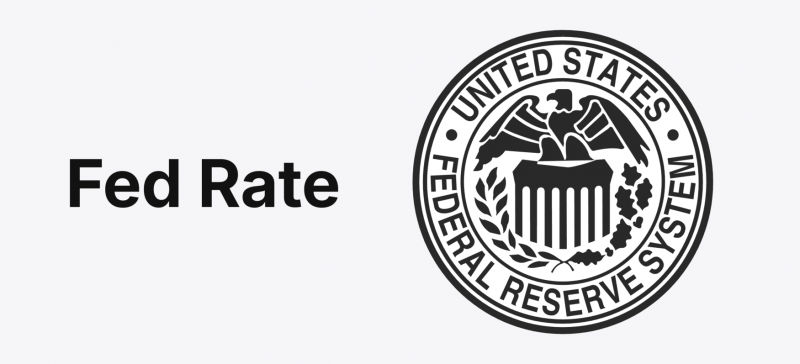Despite certain difficulties and uncertainties, cryptocurrency today is considered one of the most popular types of investments, and thanks to its rapid growth, many investors have a chance to make good money. Cryptocurrency has found application in many areas of life and is popular not only among traders and investors, but also among businesses that are trying to keep pace with technology and accept cryptocurrency for mutual payments for goods and services.
However, the price of any crypto assets is subject to volatility, which means that its value can fall sharply and then rise again at any given time. Thus, the market of cryptocurrency for institutional and private investors has become a gold mine where everyone is trying to develop their own unique crypto investing strategies for making money on price movements.
This article will help to understand the benefits of investing in cryptocurrencies and what are the main tools to work in the crypto market. In the end, we will discuss the 10 best strategies for investing in this asset class.
Benefits of Investing in Cryptocurrencies
The main advantages of investing in cryptocurrency have long been well known. They remain unchanged in 2023. The most significant of them include:
1. Accessibility
As of the present time, the entry threshold for crypto investments is still very low – virtually anyone can invest in crypto assets. The minimum transaction volume on most crypto exchanges is practically unlimited – a token can be purchased for as little as a few USDT. A similar picture is observed on online exchanges. It is extremely easy to find resources for buying and selling crypto, and most of them do not require registration and verification – all you need is a wallet to store coins.
2. Revenue
Earning hundreds or thousands of percent annually on the cryptocurrency market is not a problem. Such results are due to the rush demand for digital assets and the extremely high volatility of known tokens. But new projects promise even greater profits. For ICO and IEO participants, a rise in the value of a coin by several tens of times is quite common.
3. Simplicity and Convenience
Many people mistakenly think that cryptocurrencies are too complicated a subject to learn and use. In fact, they are available to everyone. Anyone can start using cryptocurrencies, even without technical skills and without fully understanding the nuances of the system. It is enough to start a cryptocurrency wallet, get some coins, and have access to the Internet.
Cryptocurrencies are open to everyone, including residents of the less prosperous regions where other financial services (banking products, for example) are not available.
4. Decentralization
The process of cryptocurrency issuance is not regulated by any banks, reserve systems, or governments. Even the creators themselves have no control over the process. Cryptocurrencies are issued and managed by a multitude of people included in the chain. In such a situation, it is impossible to impose restrictions on the distribution of coins. The lack of a single central data custodian (e.g., a central server in a bank) also eliminates the situation where a single crash will bring down the entire payment system.
Key Tools for Successful Cryptocurrency Investing
In any type of investment it is necessary to remember the importance of using various kinds of tools to analyze the financial market. The cryptocurrency market, compared to other markets, requires more careful attention and more cautious handling due to the high volatility of assets. Technical and fundamental analysis are considered to be the main basic tools for market analysis as part of any crypto investing strategy.
Technical Analysis
Technical analysis is a set of tools for predicting the likely change in prices based on patterns of price changes in the past in similar circumstances. The essential basis is the analysis of price charts. Theoretically, the technical analysis applies to any market. But the most widespread technical analysis is at the high-liquid free markets, for example, at the stock exchanges.
Technical analysis is used to predict future price changes based on the analysis of past price changes. It is based on the analysis of price time series, most often charts with various time constraints. In addition, information about trading volumes and other necessary statistical data is used. Technical analysis employs a wide range of models and approaches. Still, all of them are based on the assumption that analyzing the mass behavior of market participants by identifying trends makes it possible to predict future prices’ behavior.
Examples of technical analysis include “candlestick analysis. “Japanese candlesticks” are the most common type of price charting in the stock market today and “food for thought” for traders and analysts. There are two types of interpretations of Japanese candlesticks: reversal patterns and trend continuation patterns. The main reversal combinations of Japanese candlesticks: are “inverted hammer,” “bullish absorption,” “hammer,” “morning star,” “shooting star,” “bearish absorption,” etc. The main continuation combinations include “windows” and “tasuki splits.” The larger the market turnover and the number of market participants, the more methods can be applied.
Fundamental Analysis
This analysis is used to forecast the market value of companies or assets, in which all factors that can affect the price of an asset are analyzed, from macroeconomic factors, such as the economic environment in general and the condition of the chosen niche in particular, to microeconomic factors, such as the reputation of the company’s management. This analysis aims to establish the asset’s fair price and determine whether the asset is valued too high or too low.
The fundamental analysis begins with the understanding that an asset’s future potential is influenced by its past performance and the various macroeconomic conditions currently affecting the market. Traditionally, fundamental analysis is used to evaluate stocks, but it can be applied to almost all types of assets, including cryptocurrencies.
Fundamental analysis of cryptocurrencies involves looking at public blockchain data called on-chain metrics. These metrics include market value to realized value ratio, market capitalization, realized capitalization, return on spending ratio, transaction analysis, and many others.
Top 10 Crypto Investing Strategies You Should Know About in 2023
Now that we’ve figured out the benefits of investing in cryptocurrency and what the main tools are for analyzing it, it’s time to talk about crypto investing strategies. Below is a list of the 10 most common and popular ones, which are divided into 2 categories depending on whether you are investing for a short term or for a long period of time.
Short-term Investing
Among investors engaged in short-term investments in crypto assets the following crypto investing strategies are the most popular.
1. CFD Trading
Contracts for difference, or CFDs as they are commonly known, are derivative financial instruments that allow traders and investors to speculate in various financial markets without owning the underlying asset. A CFD is an agreement between two parties (seller and buyer) to transfer the difference between the current value of an asset at the time of the conclusion of the contract / opening a position and its value at the end of the contract / closing a position.
By trading CFDs, market participants can speculate on both rising and falling markets. This means they have more trading opportunities as they can profit from both buying and selling CFDs across a wide range of financial instruments. For example, when an investor or trader buys shares or securities of a company, he only makes a profit if the price of the shares rises. By comparison, when trading CFDs, an investor can also profit from selling an asset if he believes that the value of the asset will decrease.
2. Crypto Futures Trading
The second common crypto investing strategy is crypto futures trading. Cryptocurrency futures are an agreement between two counterparties to buy and sell a specific quantity of an underlying cryptocurrency at a specific futures price of a particular date and time. Cryptocurrency futures enable investors and traders to speculate on cryptocurrency’s future value. For example, participants can open a long position betting on a price rise or a short position if they expect a fall.
One of the most essential advantages of cryptocurrency futures is leverage. With leverage, traders can increase capital efficiency because they are freed from using the whole capital. However, users should always be cautious: using leverage increases both potential profits and risks. Traders should use a leverage size that is comfortable for them. For example, if you are conservative or new to cryptocurrency trading, a 2x to 5x leverage is fine.
3. Day Trading
Day trading is a crypto investing strategy in which a trader buys a cryptocurrency at a low price and sells it at a higher price within a single day. It allows traders to capitalize on small price movements in the market by using high leverage as well as short-term trading strategies.
Using this trading strategy, traders aim to catch the most opportune moment in the market by buying the cryptocurrency at the lowest possible price and then selling it at the highest possible price. One-day traders are often attracted to the potential profits, but it is worth bearing in mind that impatience, inexperience, and simple overexcitement can increase risk and potentially lead to large losses.
4. Scalping
Scalping is rightfully one of the most popular crypto investing strategies in the crypto world.
Scalping is a type of intraday speculative trading strategies based on conducting a number of short-term transactions for a small profit, which in total gives the required percentage of profitability.
Using this strategy, scalpers analyze real-time order books, volume profile, open interest, and other complex indicators. Some create their own indicators to have an advantage in the market. As with any trading strategy, finding a unique advantage in the market plays a major role in success. Scalping traders prefer not to spread out about their individual trading tools and that is why it is important to create and test your own trading strategy. Scalpers usually trade on small timeframes and as a rule these are intraday charts: – hourly – fifteen-minute – five-minute – one-minute.
5. Arbitrage Trading
Cryptocurrency arbitrage is a trading strategy that takes advantage of price differences between identical cryptocurrency assets in different markets or different pairs of cryptocurrencies in the same market to generate profits with relatively low risk.
Arbitrage trading eliminates the need to track market trends and rate charts for each cryptocurrency. The trader’s task is to turn the current difference in value and sale of an asset into his or her own profit, and he or she knows in advance what profit he or she will get by making a trade.
Long-term Investing
Now let’s take a look at crypto investing strategies used on a long investment time horizon.
1. Staking
Staking means that you simply hold the crypto, using it to validate transactions and support the network. In exchange for holding the cryptocurrency and making the network more reliable, you receive a reward. This can also be called interest. With staking, you can earn passive income simply by storing coins. In addition to receiving remuneration (in the form of additional tokens), you can receive additional income when the price of a given cryptocurrency rises. Not all cryptocurrencies support staking.
2. Lending
Lending is the oldest and most traditional method of obtaining interest. It is the lending of one’s own funds. Lending is often the lending of stock speculators for leveraged trading, which is done on margin collateral or borrowed funds. Leveraged trades require liquidity, which the exchange itself does not provide. The exchange uses the funds of users willing to lend at interest, thus earning extra money – not only on trading fees but also on loan service fees and the higher rate at which the credit is provided to traders.
3. Farming
Farming is the process of accruing tokens in the form of a reward for providing liquidity to a project by placing a certain pair of tokens in a pool. Farming is not some separate reward mechanism, but a kind of hybrid consisting of landing and staking, the essence of which for the user is to redistribute their funds between different services in order to achieve maximum efficiency from their investments.
4. HODL
HODL is a crypto strategy, the essence of which is approximately the following: “hold a coin to the last,” which is often called the strategy of the most patient ones. And it usually justifies itself: there are many cases when investors earned not just enough money to buy a car or an apartment, but entire fortunes on HODL crypto.
There is an opinion that HODL is the best strategy for beginning traders. There is logic in this statement and the main reason is that HODL is good for beginning investors – it helps to keep them from panic selling “at the bottom”. But the best results come from a combination of different elements, such as HODL with an exit plan or trading with risk management, as well as a focus on continuous self-study.
5. Liquidity Pools
Liquidity pools are an innovation of the crypto industry with no direct equivalent in traditional finance. In addition to providing a lifeline to DeFi’s core protocol business, liquidity pools also serve as breeding grounds for investors with a high risk and high return appetite where they can earn good interest for providing their assets to the pool and increasing its liquidity for a fee that is expressed as a percentage return on the invested amount over a period of time.
Conclusion
Crypto trading has opened up great opportunities to multiply capital by exploring new markets and creating effective crypto investing strategies. Each strategy in this case has its pros and cons, but one way or another, with proper use of laws of crypto market functioning, careful analysis of its indicators and large stock of patience, eventually any investor will be able to make a decent profit even from the most volatile market situations.








